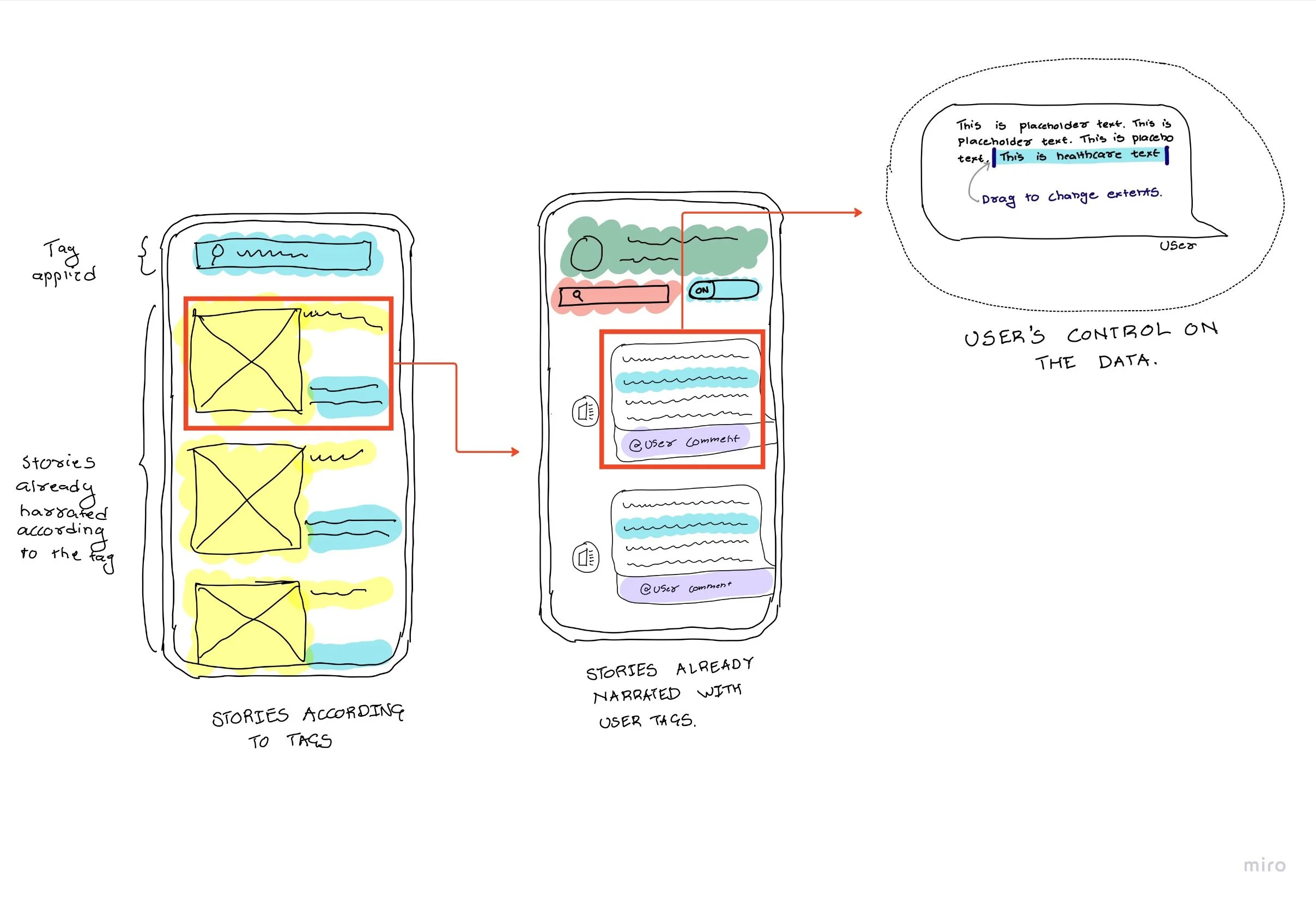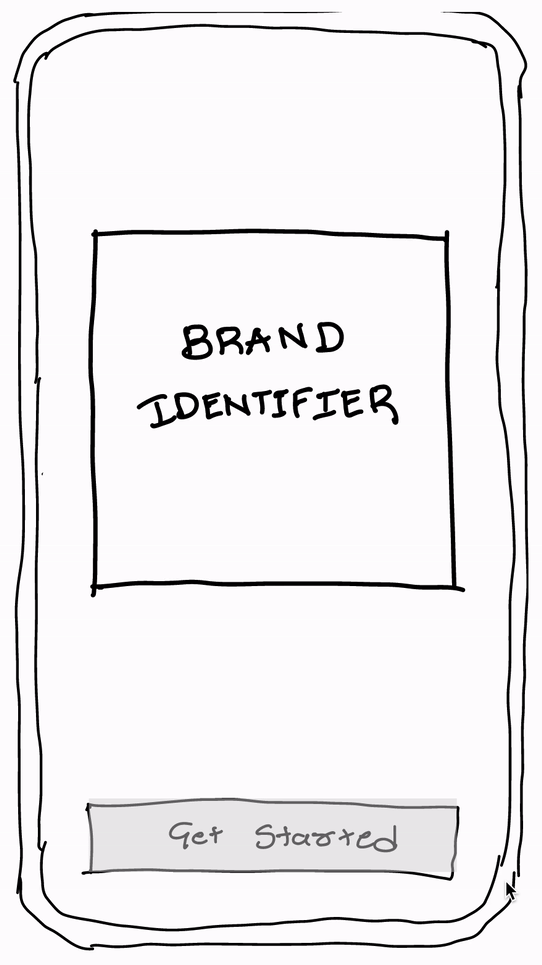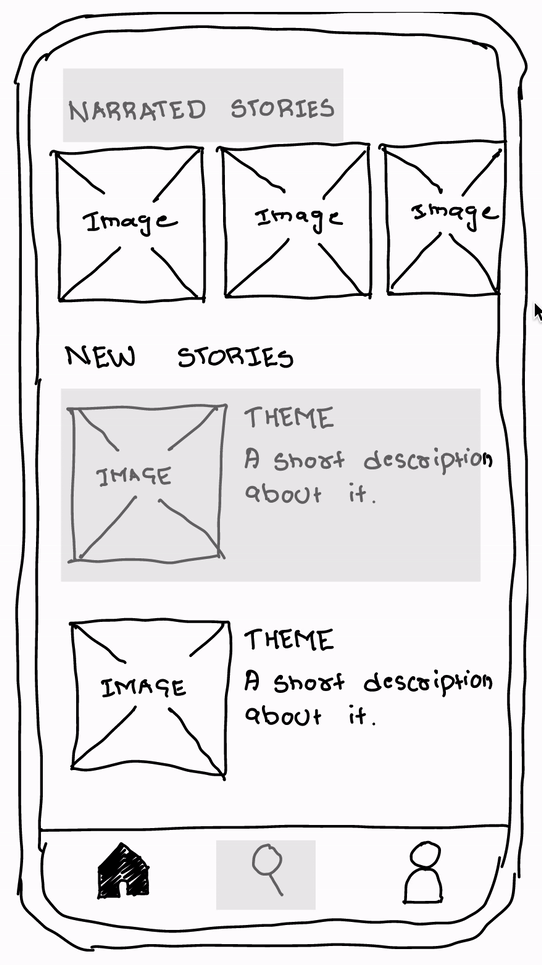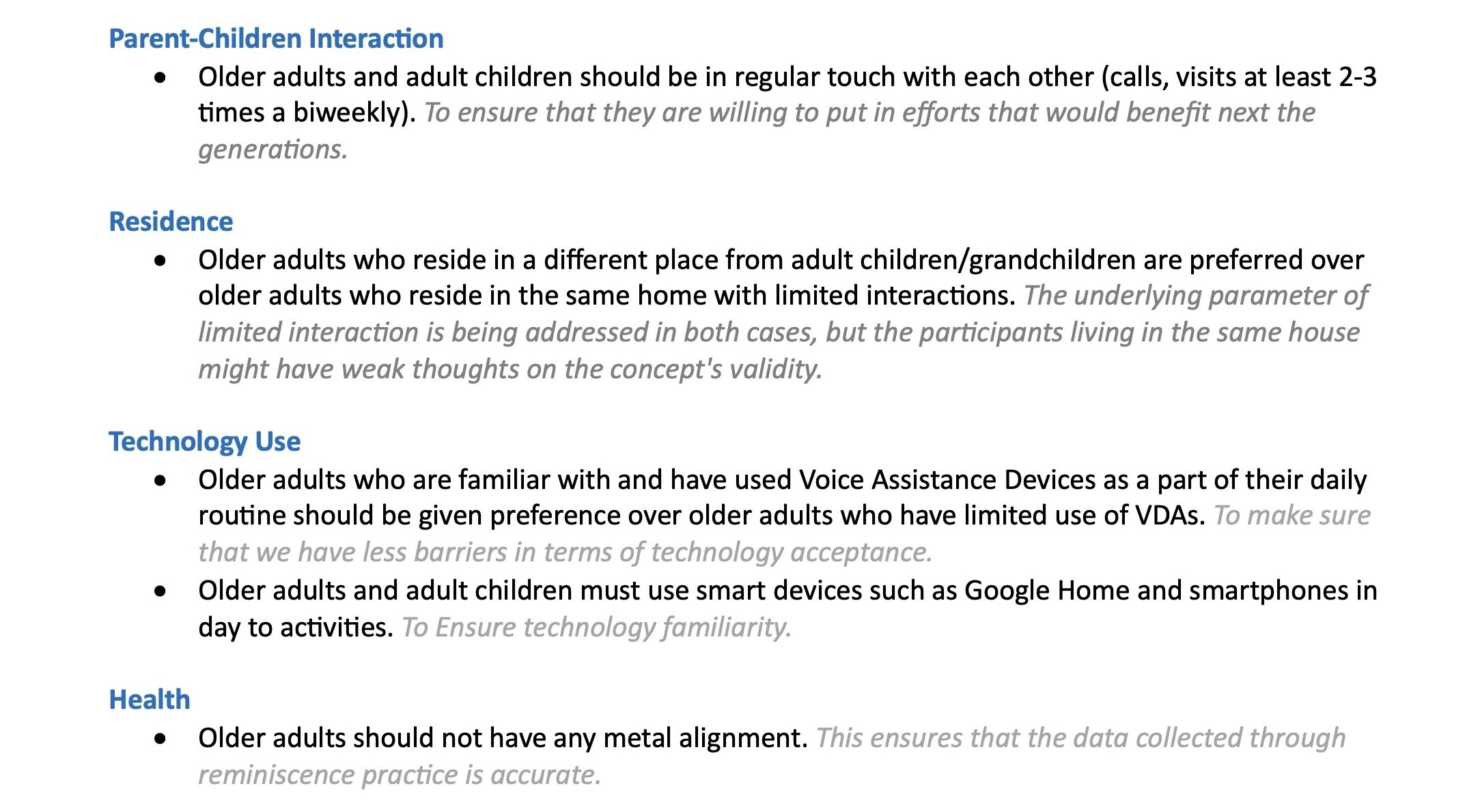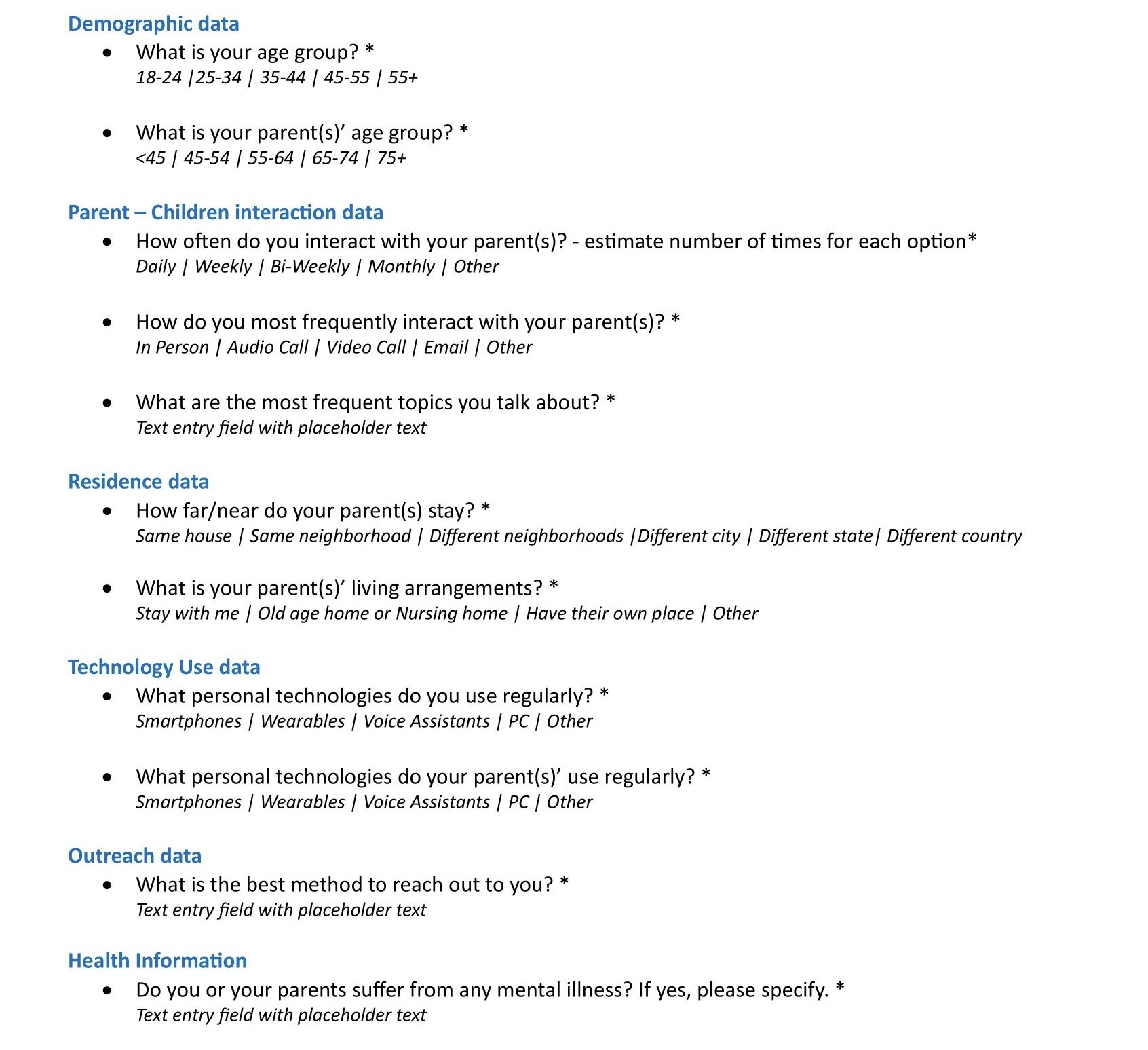Concept Development & Validation Research Plan
Reminiscence to Capture Family Health Data
Overview
In the fall of 2021, I spearheaded a project funded by a Google Grant to explore the intersection of healthcare technology and older adults. This project was done under the supervision of Prof.Aqueasha Martin Hammond.
Responsibilities
Contribution
As a solo researcher, I oversaw the concept development of the mobile application and the voice user interface device, along with planning a research study to validate and test the novel concept.
Duration
3 months
Project Type
Healthcare | Older Adults | Voice UI
The Problem
Previous research by Dr. Aquesha revealed that though older adults share health information with their adult children, a lot of crucial family health information remains unshared because;
Older adults and their adult children are often busy, leaving very little time to interact about health.
Older adults and adult children stay in different geographies, making their interactions brief and requirement-based.
Design Prompt
How might we facilitate the exchange of crucial/nuanced family health information between older adults and their adult children so that the adult children are better informed about their family health?
The Solution
A voice UI device that prompts the older adult to reminiscence a particular incident and captures their response.
Coupled with a mobile application where the responses get transcribed and A. I tag health-related data to be shared with adult children.
Why is reminiscence a part of the solution?
We brainstormed different ways to collect family health data from older adults, and out of all the ideas, reminiscence practice by older adults was the most promising way to collect holistic data as;
Reminiscence can act as a therapy for older adults.
The nature of reminiscence practice/storytelling will allow us to capture the health data with context (nuanced instances).
Concept Development
Since this idea was a unique concept, I initially constructed a tangible representation (a prototype) of it. And then utilized this prototype as a foundation for conducting both concept validation and evaluation research.
MVP features
Based on conversations with Prof.Aquesha and secondary research reviews, I prioritized the following features to be part of the MVP for this product.
1
An Onboarding Journey
An overview of how the application can be used
Overview of main features
2
Starting a New Reminiscence Instance
A/V prompt to illicit reminiscence
Live transcription of the narration
Tagging of health data by A.I.
3
Revisiting a Reminiscence Instance
Tagging of health data by the user(s)
Sharing of reminiscence instance with other users
Control over privacy
Searching for a saved reminiscence instance.
Information Architecture
Prototype
Onboarding Flow
During the onboard, the user gets an overview of the application and its features.
New Reminiscence Instance
From the home screen, the user can start a new reminiscence instance by selecting an audio & visual prompt. The screen displays the live recording and the transcription. The A.I. tags the health data as the user narrates a story.
Revisiting a Reminiscence Instance
Users can find narrated stories by searching through AI and user-set tags. Once in a story, the user can see all the tags and users who have access to it. Users can either read or listen through the narration and generate new tags. Users also have privacy control over what to share what not to share.
Research Plan
As the concept's target audience(s) are individuals from 2 generations, I decided to conduct a 5 participatory design session(s) consisting of 2 pairs each to expedite the concept validation and usability testing process.
Research goals
The overarching research goal was to validate the concept and evaluate the mobile application with the voice assistant device. But, more specifically:
I.Concept Validation
To understand how the target audience perceives the concept. (Liked/disliked, usefulness, use cases, favorite/least favorite, things that stood out, difficult to understand, easy to understand, the concept reminds of, etc.)
II.Usability Evaluation
To determine if users can understand the application function & features from the onboarding flow.
To identify if the Audio-Visual prompt can illicit a reminiscence.
To understand users’ thoughts on - A.I. tag generation, user tag generation, sharing, and the privacy
To understand if users can execute the following tasks – Searching by multiple tags, sharing, tagging
To identify the accessibility challenges & opportunities to improve the design of Voice Assistant Devices & mobile applications.
Study Artifacts
Participant Screening Survey
Participatory Design Session Script
Technology Acceptance Survey
Participant Recruitment Strategy
Current Stauts
After a break of 5 months, the project is back in action and is being led by Prof. Aquesh and her research assistants at Indiana University.
Learnings
01
Accessibility considerations are paramount when designing for older adults.
02
Concept testing research has elements of discovery and evaluative research; hence, clearly defining the research goal and the matrix to measure validation is the key to successful research.
